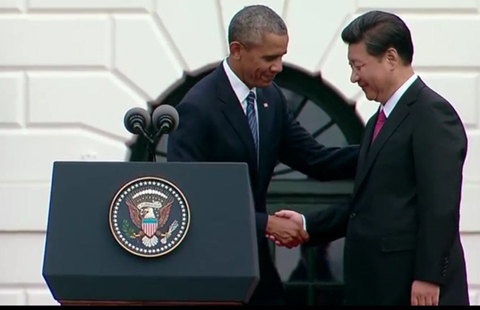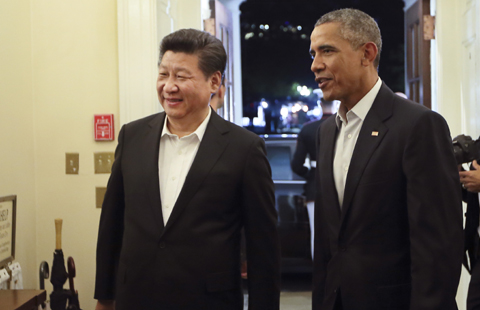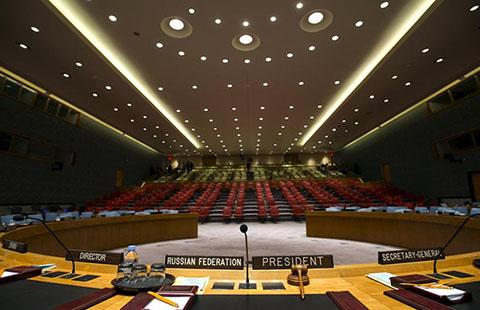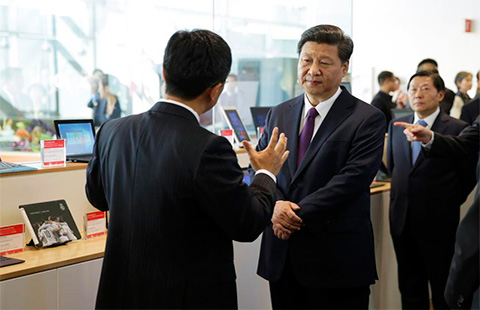China and the EU need to form closer climate change alliances
Updated: 2015-09-25 22:46
By Cecily Liu(China Daily Europe)
|
||||||||
China and Europe need to form more strategic alliances on combating global climate change through policy cooperation and deepening of green policy integration, experts said ahead of the EU-China Economic and Trade Dialogue to take place in Beijing on September 28, 2015.
Discussions in Beijing are seen by the low carbon industry as a crucial step towards further government level discussions at the Paris Climate Summit in December.
Crucial to any alliance is recognition from both sides of similar climate change challenges and opportunities faced by both Europe and China, according to a roundtable discussion held on September 15 at London's Chatham House think tank.
Anthony Froggart, a senior research fellow at Chatham House, says there are many opportunities for climate change collaboration, and one area is China's urbanization, because the way urban infrastructure is built has significant implications on resource consumption and energy efficiency.
This is an important area where Europe could offer some expertise to China, as Europe has also gone through the process with some knowledge of existing technology and expertise in this area, Froggart says.
China's urban population increased from 40.4 percent of the total in 2005 to 52.3 percent in 2012 and is expected to reach 70 percent by 2030. According to forecasts, China is expected to have 200-300 million inhabitants moving from rural to urban areas in the next few years.
This debate is important because the way urban infrastructure is developed can mean that the use of fossil fuels is locked in once construction is complete, as residential living, including the consumption of goods, food, heating and electricity, account for nearly four fifth of urban energy consumption.
Meanwhile, going forward it is also important to help China find a way to reduce dependency on certain types of resources such as coal and oil, by increasing the range of materials it uses for energy production, Froggart says.
China should also consider the correct method of maintaining growth while transforming energy consumption, which can be achieved by embedding renewable energy into the economic structure in an efficient way, he says.
Nick Mabey, Chief Executive and a founder director of E3G, a not-for-profit company, says that the relationship between Europe and China is becoming closer from a political perspective and there is a pressing need for both sides to better understand each other.
Such an understanding would help avoid problems such as the dispute over the EU's setting of tariff for China's low cost solar panel exports to Europe, which benefits the EU by providing consumers with a low cost environmentally friendly solution to energy.
Mabey says it is important to align the objectives of the Europe Union's reform plans and China's 13th Five-Year Plan, turning the strategic alliance into "opportunities rather than sources of tension."
In June this year E3G published a research paper in cooperation with Chatham House which has provided a few key suggestions for the forthcoming Economic and Trade Dialogue. The paper is titled 'Enhancing engagement between China and the EU on resource governance and low carbon development.'
The basis for the paper is the growing economic interdependence of China and Europe, because they are both vulnerable to climate change and both have experienced a rise in the number of extreme weather events in recent years.
Furthermore, China and the EU are the world's largest importers of natural resources, as they are forecast to rely on imports for an estimated 80 percent of their oil supply by 2030, meaning fluctuations in resource prices will greatly affect both.
The suggestions for cooperation given in the report include an increasing focus on the existing EU China partnerships like energy security, where the two sides can form a consumer alliance with more cooperation on renewable energy.
As well, the two sides are suggested to deepen their economic integration and reform through green growth, which is a cooperation that could involve continued market integration, policy coordination and consultation, and stronger practical cooperation and regulation.
Furthermore, the two governments are encouraged to work towards a stronger climate change regime, and the establishment of an EU-China working group on climate change governance.
Previously in 2007 Chatham House and E3G have published a joint report called Changing Climates, which suggest that cooperation between China and the EU should be deepened to include strategic and long term clean energy research, development and demonstration, joint standard setting, green trade and investment liberalization.
Since then, clean energy market integration has accelerated. As recommended in Changing Climates, low carbon zones have been established at several levels in China, affecting 350 million people. Low emission trading pilot projects have also been established and supported by European technical assistance.
Meanwhile, demand created by European renewable energy policies created a big push for China's renewable energy industries and exports, and this has brought major reductions in global costs, especially for photovoltaic and light-emitting diodes.
However, such cooperation met many political challenges, especially since 2007, driven by events such as the EU's complaints about low prices for Chinese exports of efficient light bulbs, rare earth minerals and solar power subsidies.
Mabey says such trade protectionist measures show the concerns of the situation when what makes sense economically does not transform into politics, because it is the EU market that has driven the growth of China's renewable industry to its scale.
Globally, solar photovoltaic module prices have fallen by 80 percent since 2008, by 20 percent since the beginning of 2012 and by 12 percent in 2014 alone. This is made possible by both the EU's commitment to renewable targets and China's manufacturing prowess, and the fall in prices has also brought benefits to both the Chinese and EU economies.
In relation to these trade tensions, the paper suggests that in the future both the EU and China should maintain and to consider lowering current levels of Chinese and EU applied tariffs on a mutually-agreed list of low carbon and environmental goods and services, and to work towards further trade liberalization.
It also suggests that both sides should work proactively to avoid unnecessary trade disputes, especially in low carbon and environmental sectors, by enhancing the mutual transparency of subsidies and support mechanisms.
Going forward, there many more issues that EU China cooperation on low carbon development needs to confront, and one example is infrastructure investment, which China is leading, through initiatives such as the Asian Infrastructure Investment Bank and the country's One Belt One Road initiative, Mabey says.
A total of 14 European countries have invested in the AIIB, although not as a coherent bloc, and cooperation with China on the bank will lead to discussion on what type of investments are suitable for the AIIB, and from Europe's perspective the sustainability agenda of investment will come into the discussions.
Another key area that Mabey's team sees as a key driver for low carbon cooperation is in the area of green finance, which will be a powerful force to channel funds into environmentally friendly projects.
Because it was heavily involved in helping to set up the UK Green Investment Bank, Mabey's team has also been invited to give advice to the Chinese government, helping it to come up with plans for equivalent financial market structures that can channel funds into environmental projects.
Founded in 2012, the UK Green Investment Bank's purpose is to accelerate the UK's transition to a greener, stronger economy. It has been given 3.8 billion pounds of capital to invest by the UK government, and most of its investments help fund the creation of new, modern, green infrastructure across the UK and with that, new jobs in construction and operational projects.
To contact the author: cecily.liu@mail.chinadailyuk.com
- Japan to build Australia's next-generation submarines
- Beijing supports friendly China-Japan exchanges
- S. Korea, Japan to hold foreign ministers' meeting in NY
- Saudi king orders probe as death toll set to rise
- Colombia, FARC reach breakthrough agreement in Havana
- White House prepares for government shutdown

 Obama welcomes Chinese President Xi for state visit with 'Nihao'
Obama welcomes Chinese President Xi for state visit with 'Nihao'
 Xi eyes on trust at Blair House
Xi eyes on trust at Blair House
 Here's what's on the menu for the state dinner
Here's what's on the menu for the state dinner
 President Xi welcomed by Obama as he arrives in Washington DC
President Xi welcomed by Obama as he arrives in Washington DC-
 Historical photos of Chinese, American leaders' meets
Historical photos of Chinese, American leaders' meets 
 Infographic: Chinese are No 1 international home buyers in US
Infographic: Chinese are No 1 international home buyers in US
 Inside the United Nations headquarters
Inside the United Nations headquarters
 President Xi visits Microsoft campus in Seattle
President Xi visits Microsoft campus in Seattle
Most Viewed
Editor's Picks

|

|

|

|

|

|
Today's Top News
Young people from US look forward to Xi's state visit: Survey
US to accept more refugees than planned
Li calls on State-owned firms to tap more global markets
Apple's iOS App Store suffers first major attack
Japan enacts new security laws to overturn postwar pacifism
Court catalogs schools' violent crimes
'Beauty of Beijing's alleys akin to a wise, old person'
China makes progress fighting domestic, international cyber crime
US Weekly

|

|







